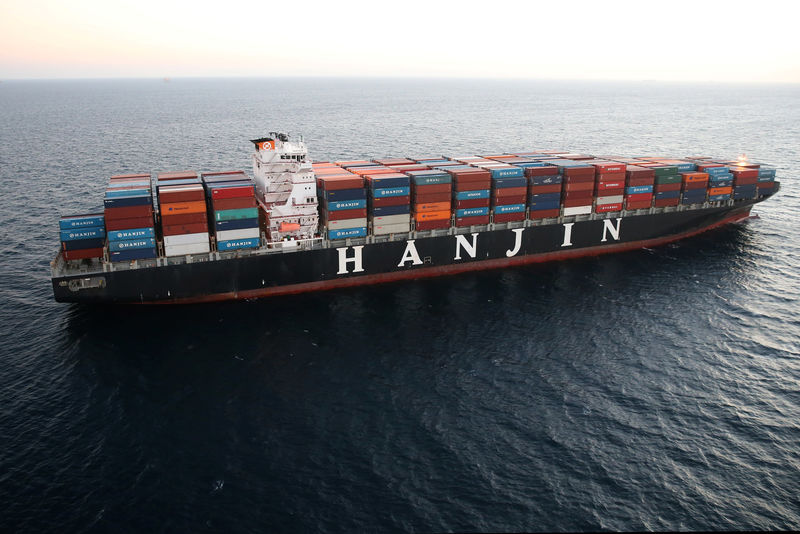* Three bulk carriers sold charter-free at about market rates
* Spike in freight rates not expected to last due to over-capacity
* Hanjin-owed vessels worth around $1.76 bln - industry etimate
By Brenda Goh and Keith Wallis
SHANGHAI/SINGAPORE, Sept 14 (Reuters) - Three ships chartered to Hanjin Shipping Co Ltd 117930.KS have been sold, the first of dozens of vessels expected to be hawked following the failure of the world's seventh largest container shipper.
Around $14 billion of cargo has been tied up globally as ports, tugboat operators and cargo handling firms worried about not being paid refuse to work for Hanjin, which filed for receivership in a Seoul court on Aug 31.
Three bulk carriers, used for carrying commodities such as iron ore, coal and grain, have been sold for a total of almost $39 million, according to data from ship valuation firm VesselsValue.
The largest, the 180,000 deadweight tonne (DWT) capesize Hanjin Matsuyama, was bought by Singapore-based Winning Shipping for $22.75 million, according to the data.
A man who identified himself as the head of the purchasing department in the Qingdao branch of Winning Shipping but declined to give his name said the deal had been agreed but not yet completed.
"We began talking about the deal before the news about Hanjin began emerging, we were already in the process of buying it."
The five-year old ship was sold charter-free, meaning it is no longer chartered by Hanjin Shipping, a sale and purchase broker told Reuters.
The two smaller 37,000 DWT handyside vessels have been sold to Greek buyers.
"After news of (Hanjin's) collapse they were redelivered early to financiers and sold charter free," the broker added.
With ship prices already depressed by over-capacity, the values achieved were in line with recent similar sales and estimates from shipping services firm Clarkson.
Shipbrokers expect more Hanjin ships to be put on the market although uncertainty about the company's future could delay progress.
OVER-CAPACITY TO REMAIN
While uncertainty around Hanjin Shipping has caused a spike in freight prices, few expect it to last.
Cargo ships of around 257.8 million DWT, equal to about 14.6 percent of the global fleet, are due for delivery from now to around 2019 and global seaborne trade growth is just 2.4 percent, Clarkson data shows.
That points to little short-term improvement in the shipping markets with no real return to profitability until 2019-2020, at least, analysts say.
Low scrap values and freight rates higher than operating costs mean there is little incentive for owners to scrap.
"The industry needs to break the trend of halting demolition activity as soon as the Baltic Dry Index (a basket of freight rates) improves marginally," said Peter Sand, chief shipping analyst at shipping lobby group BIMCO.
The fleet of 63 ships Hanjin owns is worth around $1.76 billion, VesselsValue estimates, well short of the $5.5 billion in debt the company reported as at the end of June, 2016. It charters a further 78 vessels.
Around two-thirds of the total are not operating properly, including vessels seized, barred entry to ports or terminals, denied services or moving slowly, according to Hanjin Shipping data on Monday.
The chairman and former chairwoman of parent company Hanjin Group on Tuesday transferred around $45 million to help unload cargo stranded on the troubled shipper's vessels. Hanjin estimates at least $100 million more is needed to clear the cargo and regulators have warned securing further funds from Hanjin Shipping shareholders could take "considerable time."
South Korea has said no government or central bank money would be directly injected into the firms restructuring in the ailing shipping and shipbuilding industries, though it is helping small-to-medium sized businesses hit by the restructuring. Graphic on Hanjin Shipping
http://tmsnrt.rs/2cq2WWj
^^^^^^^^^^^^^^^^^^^^^^^^^^^^^^^^^^^^^^^^^^^^^^^^^^^^^^^^^^^> (Editing by Lincoln Feast)
